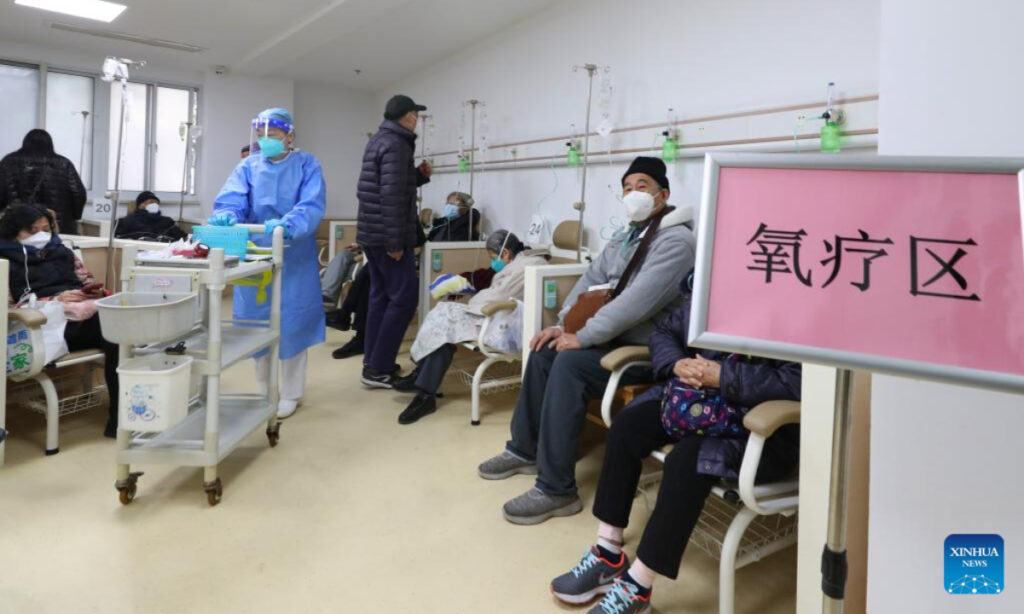Three years into the pandemic, the world has yet to come out of the swamp that has worn down the global economy as well as every individual mentally and physically. Despite all the achievements and improvements accomplished in medicine, diagnostics, therapeutics and vaccines throughout past years, we have now reached a “déjà vu” point where the spotlight is once again being aimed at China’s policy-making, as some countries, just like three years ago, are imposing unreasonable and discriminatory restrictions on inbound Chinese travelers. The non-stop anti-China propaganda in the West has further stoked up fear and anxiety around the world as China carefully navigates through its so-far biggest surge of COVID-19 transmission.
However, if we look back at the human history of fighting this constantly mutating virus, it would make much more sense to see China’s recent policy-shift as a silver lining rather than the harbinger of another looming storm.
The virus is evolving, and so is our toolkit
Our war with SARS-CoV-2 is essentially a race where we try our best to outplay the emergence of new variants by innovating our response toolkit. We have to admit that we are lagging a little behind in this race for now, as our treatments are still limited. Meanwhile, the virus is still rampaging with its thousands of variants and sub-variants, including several VOCs (variants of concern) that have caused chaos and panic on a large scale, like Alpha, Beta, Gamma, Delta and Omicron. However, looking on the bright side, these mutations might not be a completely bad thing. After reviewing the numbers and statistics concerning infection rates, hospitalization rates, death rates, etc., it is quite clear that the Omicron variant, which started to become dominant in 2022, is comparatively less lethal. That is why, while still being highly contagious, Omicron has been widely regarded by many countries as a good chance to adjust their COVID-19 strategies and return to a pre-pandemic lifestyle.
Another important factor which prompted so many countries to change course during the Omicron wave in 2022 is people’s well-fortified immune protection. Vaccination coverage around the world has made tremendous progress over the past three years, with special attention paid to medical workers and vulnerable groups. And people are better prepared as good public health measures have been practiced for years, personal protective equipment has been widely distributed, and medical services have been better trained for COVID-19 patients. As a matter of fact, the world has never been so close to claiming victory over this pandemic, and assuredly we will as long as we stick together and fight as one.
China is adjusting its response accordingly, not arbitrarily
Yet this global alliance is being challenged again now that China has adjusted its COVID-19 strategies. Misinformation, mistrust and stigmatization of all forms occupy the headlines of Western media, portraying China as a villain trying to destroy the world order. This brings up the memory of the unfair treatment South Africa experienced when it first reported the Omicron variant in late 2021, and that China saw earlier in 2020 when it first reported its COVID-19 cases. History has well proven that travel restrictions help little in curbing the spread of the virus, but what they do bring about is nothing but eye-catching headlines that excessively exaggerate the facts. On top of that, the biased coverage and “blame-the-victim” game of Western media has only triggered frustration and hatred among its audience and misled them from seeing the whole picture, where China is constantly adjusting its policies according to the needs of its people, the development of the pandemic, and the changing landscape of the world.
Actually, China has so far issued nine versions of its Protocol for COVID-19 Prevention, Control, Diagnosis and Management, as well as a series of new measures, based on the features of the virus and the practices of local medical units combating the pandemic. Quarantines for incoming travelers were gradually shortened due to the shorter incubation period of new variants and restrictions on social activities were gradually lifted because the virus, for the first time, is no longer the life-threatening danger it used to be. Overall, China has been adjusting its anti-pandemic policies to try its best to strike a balance between pandemic control and socioeconomic development, with people’s lives and livelihood at its center. This change in policies is not an unexpected move, but a thoroughly deliberated and meticulously planned decision.
The war is not over
Many worry that the pandemic is spinning out of control now that new measures have been implemented in China. That is a mistake based on a shallow understanding of China’s recent policy-shift. It is inevitable that a surge of COVID-19 cases would follow the easing of restrictions, but that was true for almost every country that dealt with Omicron. But China is not sitting idly by watching the fire burn down the house. It has taken all measures possible to curb the impact of this round of infection, including encouraging vaccine boosters, especially for those who need them the most, ramping up production of medicine and other medical equipment, improving treatments and increasing the number of intensive care units. These measures have proven effective as big cities like Beijing and Guangzhou have passed the transmission peak. It is hopeful that people can soon live their lives like they did before the pandemic.
Besides this, when it comes to the spirit of fighting as one and being responsible to the rest of the world, China has also done a lot of work to reduce potential collateral damage. China’s CDC has been closely monitoring at all levels the evolution of the virus and sharing genome sequencing data through the GISAID platform. China’s officials and experts have also been in close contact with the WHO and their counterparts in other countries to keep them informed about China’s situation. Sometimes data and information sharing might not be as timely, or information-collection not as ideal as we would like, but that is totally understandable considering that China has been pretty successful in preventing the virus and so its emergency response framework might need some time to adjust to this new norm. There is no “perfect” emergency response, but rest assured that China has never taken the enemy lightly and is ready to fight the war unwaveringly till victory is finally claimed.
China’s dynamic adjustment of its anti-pandemic policies has bought its people and the world precious time to upgrade the response toolkit. We have now reached a turning point to take a step further, in the hopes of finally dispelling the gloom of the pandemic and restoring normal life. At this moment of change, finger-pointing and discrimination are the last things we need. One thing everyone should bear in mind is that we are all in this COVID-19 situation together, and we can only see things through as a whole.
(Global Times)




